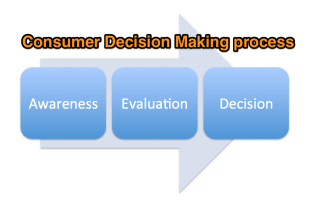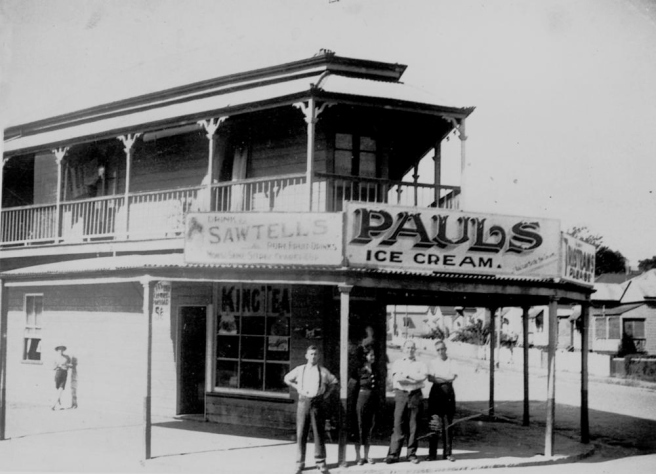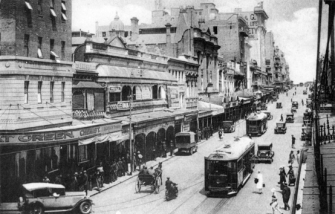 It takes a long time for a prospect to actually make the decision to buy a product or service. There are several processes they go through, and at each step there is a funnelling, or more correctly a loss, of prospects. This is called the consumer decision making process. If you understand your customer you can help them through each of these stages by embedding information and values that will aid a successful conversion.
It takes a long time for a prospect to actually make the decision to buy a product or service. There are several processes they go through, and at each step there is a funnelling, or more correctly a loss, of prospects. This is called the consumer decision making process. If you understand your customer you can help them through each of these stages by embedding information and values that will aid a successful conversion.
Depending on who you ask there are a different number of stages, but most agree on these three main ones: Awareness, Evaluation and finally Decision. One of the goals of marketing is to make sure the input (Awareness) attracts as many as possible. Also at each step as you progress through Evaluation (does this product or service suit my needs?) and Decision (I’m going to pickup the phone right now) you want to retain as many as possible.
Pretty simple in theory. Understanding these elements and incorporating them into your website and and brand are really critical!

 Hooray the NBN is finally here, After years of sitting 4km from the exchange on the end of some suspect copper (and very slow ADSL to prove it) we finally have the NBN. Its not the almost unfundable fibre to the premises or even to the node instead the much derided HFC. HFC is hybrid fibre coaxial, means it pretty much runs on the Foxtel/Optus cable network which is all great in theory. There’s just one snag this network was designed around a certain set of carrier frequencies and the NBN is using a different set of frequencies. All good in theory, but in practice it means the network components may not quite be up to running at those frequencies, nor have been replaced in the arc to connect as much of Australia as possible can before the next election.
Hooray the NBN is finally here, After years of sitting 4km from the exchange on the end of some suspect copper (and very slow ADSL to prove it) we finally have the NBN. Its not the almost unfundable fibre to the premises or even to the node instead the much derided HFC. HFC is hybrid fibre coaxial, means it pretty much runs on the Foxtel/Optus cable network which is all great in theory. There’s just one snag this network was designed around a certain set of carrier frequencies and the NBN is using a different set of frequencies. All good in theory, but in practice it means the network components may not quite be up to running at those frequencies, nor have been replaced in the arc to connect as much of Australia as possible can before the next election.
